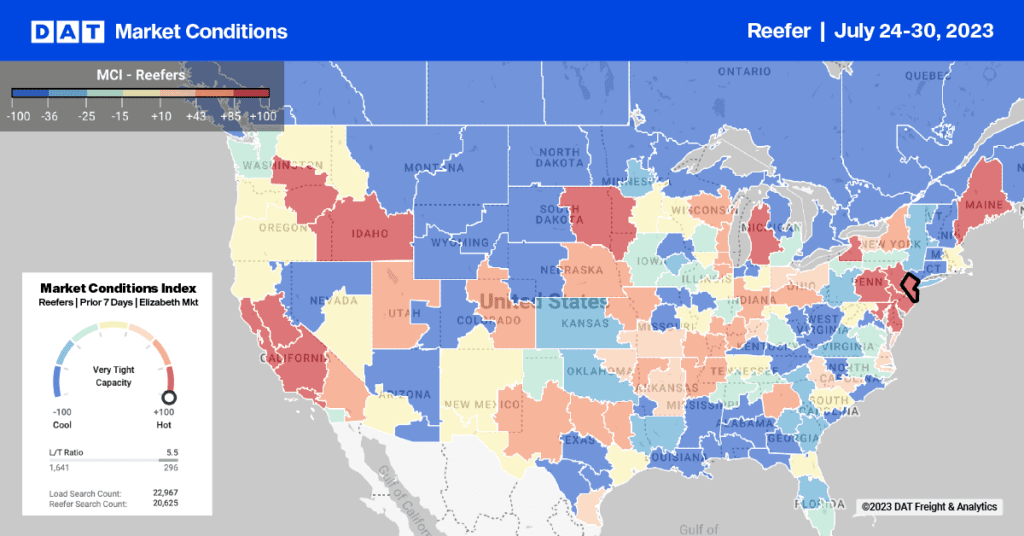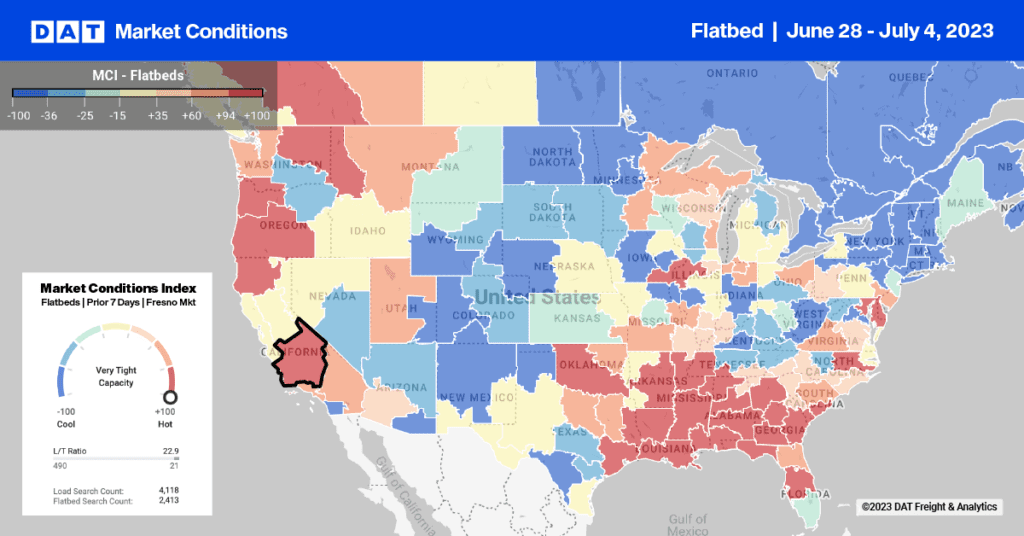Are your insurance premiums going up? The FMCSA has finally issued its Advanced Notice of Proposed Rulemaking in regard to raising the minimum financial responsibility required of carriers, but the notice stops short of suggesting a dollar amount for the new minimum. Instead, the FMCSA is soliciting input from trucking companies and other industry stakeholders.
The ANPR includes 26 questions that the FMCSA is looking to have answered during its public comment period, which ends Feb. 26. You can read the notice here, and I’ve copied and pasted the questions below.
Small Business Hit Hardest
Any increase in the minimum financial responsibility will hit small carriers and owner-operators hardest since it will lead to higher insurance premiums, already one of the biggest costs of doing business for a carrier. The increased costs will force many out of business, even as demand for trucks is high and capacity is tight.
The current minimum of $750,000 for general freight has been in place since 1985. The FMCSA noted when it first took up the question of financial responsibility that, had the current minimums kept pace with inflation, the minimum would be about $1.6 million today, as measured by the consumer price index. Measured against the medical consumer price index, it would be $3.2 million.
Not Worth the Cost
But even studies performed by organizations that support raising the limit have found that crashes resulting in claims that exceed the limit are rare. The Trucking Alliance, a group of seven mega-carriers that are lobbying to raise the limit, found that only 1 percent of those claims were settled above the current minimum.
ATA and OOIDA both oppose the measure, and ATA’s study of data from two of the 10 largest trucking insurers found that there’s a 0.73 percent chance of crash resulting in a settlement above $1 million. The ATA study included ten times as many settlements as the Trucking Alliance’s, and it found that the average cost per crash is $11,229.
Click here to fill out the form to comment on the proposed rule and provide your insights.
Below are the 26 questions the FMCSA posed it the ANPR.
Premium Rates
1. What are the current insurance premium rates (baseline) for each category of carriers (property, hazardous materials, and passenger) covered under the current financial responsibility regulations? To what extent do the premiums vary based on carriers’ safety performance information from FMCSA?
2. For each 10% increase in insurance requirements, how much would the premium rates increase? How much additional capital would insurers have to raise to cover the new exposure associated with each 10% increase?
3. What percentage of fleets, based on size and the type of operation of the carrier (passenger, property, hazmat), already have liability coverage that exceed the minimum financial responsibility requirement and by how much? What are the premiums for the policies that exceed the Federal minimums?
4. How are insurance premium rates determined? Is it by driver? Is it by credit or safety history? Is there a discount for a certain number of vehicles in a fleet? Is there a discount for bundling? Are there any other unique methods of determining rates? In the event of a crash, are carriers responsible for paying a deductible? If so, what are the most common deductible amounts? What are some of the major thresholds that result in changes in premium costs?
Current Minimum Levels of Financial Responsibility
5. How often is the minimum level of financial responsibility insufficient to meet the actual costs associated with a crash, specifically for lifelong medical support? How often are carriers liable for crash costs in excess of the financial responsibility requirements unable to pay damages? How often do carriers go bankrupt following a crash with damages in excess of the minimum requirements? How often do carriers attempt to reincarnate in order to avoid paying damages? How would increasing the insurance requirements change the behavior of such carriers?
6. How often is the minimum level of financial responsibility exceeded by damages caused by the unintentional release of hazardous materials from a carrier required to have $5 million in coverage?
Impacts of Increasing the Minimum Level of Financial Responsibility
7. Would an increase in financial responsibility requirements affect small and large motor carriers differently? If so, how?
8. How would increasing the minimum financial responsibility requirements affect the ability of a carrier to obtain insurance?
9. How would increasing minimum levels of financial responsibility affect safety, e.g., would carriers put off “optional costs” such as safety programs, preventive maintenance and investments in new technology, to cover the high cost of premiums? Would higher minimum levels drive unsafe carriers out of business? Is there any evidence that CMV carriers take more risks because they know they are insured? How could these effects be measured?
10. What are the current State insurance requirements and how do they vary from the Federal requirements?
11. How many carriers currently participate in Risk Retention Groups (RRG)? If FMCSA raised the minimum level of financial responsibility requirements, how would that affect RRGs? What are the current RRG rates, and how would they change if the minimum level of financial responsibility is raised?
12. What percentage of insurance-related cases settles before trial at the current minimum levels of financial responsibility? If the minimum levels are increased, would the same percentage of cases settle before trial?
Compensation
13. What minimum levels of financial responsibility are needed to adequately protect against uncompensated losses associated with crashes?
14. What other mechanisms, besides increased minimum levels of financial responsibility, are available to more fully compensate persons who suffer catastrophic loss? Should FMCSA consider creating a compensation fund for such purposes? If so, how would such a fund be administered? Who would be eligible to receive compensation from the fund? What claims would be covered? Would a compensation fund create a disincentive for self-insured or less well insured motor carriers to make safety improvements? Are there other potential administrators of such a fund?
15. How would increasing the minimum financial responsibility requirements affect out-of-court crash damage settlement agreements?
Information Sources
16. As noted in its report to Congress, FMCSA has had difficulty obtaining information on insurance company underwriting procedures and motor carrier premiums. The insurance industry understandably regards such information as trade secrets, and motor carriers are likewise reluctant to disclose what they pay to competitors or other insurance companies. What procedures might FMCSA follow to obtain such underwriting and pricing data?
17. In addition to the information discussed above, what other sources of information should FMCSA evaluate in connection with potential changes to minimum required financial responsibility levels?
Timelines
18. If the required amount of financial responsibility is increased, what is a reasonable phase- in period for insurance companies and motor carriers to adjust to the new requirements?
19. Should there be a standard process for updating the minimum levels of financial responsibility (e.g., using core CPI, medical CPI, etc.)? How often should the update occur, and to what data source should the minimum be linked (a risk-based or inflation-based measure)?
BMC 84 and 85 Filers
20. What information regarding claims should FMCSA require trust fund providers (BMC-85 filers) to make publicly available on their Web sites?
21. If a broker or freight forwarder fails financially, how should BMC-85 trust providers make public notification?
22. Should the BMC-84 and BMC-85 forms be adjusted to provide claims handling instructions to the surety or trustee? If so, how?
Trip Insurance, Bus Brokers, and Self-Insurance
23. Does the trip insurance authorized for Mexican commercial zone carriers in § 387.7(b)(3) provide compensation comparable to the insurance that FMCSA requires for domestic carriers, and what are suggested methods for verifying the validity of a carrier’s trip insurance in a timely manner?
24. In regards to trip insurance, as an aid to verification and to reduce fraud, should policy coverage periods be no less than seven days as opposed to the current 24 hour minimum?
25. Should bus brokers be required to file evidence of financial responsibility pursuant to 49 U.S.C. 13904(f)? What benefits would accrue from such a requirement?
26. Should the requirement in 49 CFR 387.309(a)(3) that carriers in the self-insurance program have “an adequate safety program” be enhanced? If so, how?


